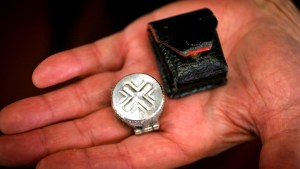Viaticum is a term developed by the Catholic Church that has a long history and much symbolism. Strictly speaking the word “viaticum” is used in the Church to denote the reception of Holy Communion by a sick person on their deathbed.
This definition is reflected in the Compendium of the Catechism of the Catholic Church.
Viaticum is the Holy Eucharist received by those who are about to leave this earthly life and are preparing for the journey to eternal life. Communion in the body and blood of Christ who died and rose from the dead, received at the moment of passing from this world to the Father, is the seed of eternal life and the power of the resurrection.
The word is derived from an ancient Mediterranean tradition of a meal shared by those setting out on a journey. The Catholic Encyclopedia explains the rich history of this word.
Among the ancient Greeks the custom prevailed of giving a supper to those setting out on a journey. This was called hodoiporion “Convivium, quod itineris comitibus præbetur” (Hedericus, “Lex. græc-lat.”). The provision of all things necessary for such a journey, viz. food, money, clothes, utensils and expense, was called ephodion. The adjectival equivalent in Latin of both these words is viaticus, i.e. “of or pertaining to a road or journey.”
For this reason “viaticum” is often referred to as “food for the journey,” in reference to the spiritual food of the Eucharist and the journey into Everlasting Life.
The essential rite of “viaticum” is distributing Holy Communion to an individual in danger of death, but is often preceded by the sacraments of anointing of the sick and confession.
The word has a rich and beautiful history and illustrates in a poetic way the passage from this life to the next, taking with us the spiritual food we need.

Read more:
What is the Apostolic Pardon and why is it important?

Read more:
How to use a sick-call crucifix

